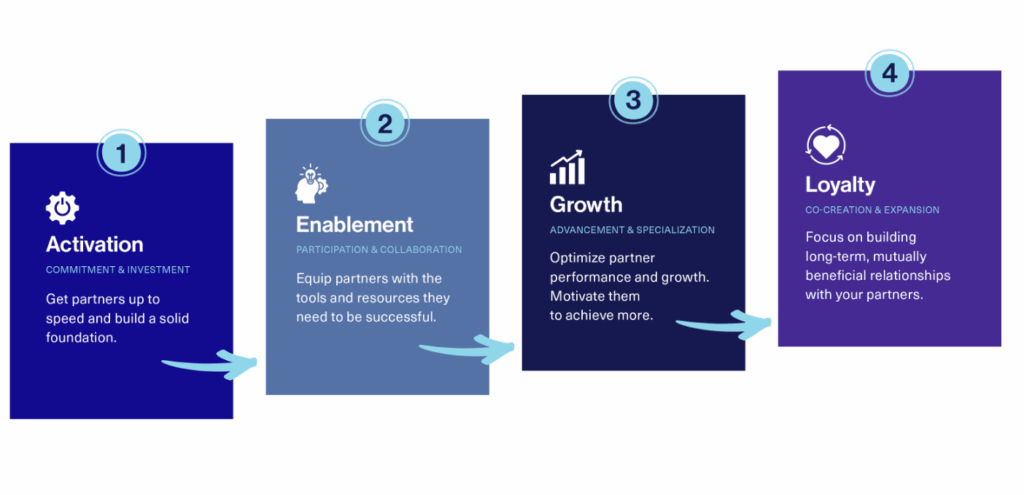
As a program owner, you’ve likely experienced the challenge: Partners are quiet. Too quiet. They’re not disconnected from the program, but they’re not interacting with it in a way that’s driving performance.
You’ve noticed it. Fewer opt-ins. Fewer sign-ups. Sales claims are trickling in and traffic to your program page feels lighter than usual. The numbers back it up too. Nearly 80% of your revenue comes from only 20% of your partners and most seem to be idling somewhere between active participation and passive involvement.
The big question is: Is this just a temporary dip or does it signal a larger issue that requires attention?
Partners don’t go quiet overnight. It’s a slow fade. When there no intervention or when shrinking participation isn’t taken as a cue to make a strategic shift, disengagement deepens. And where there’s disengagement there’s always a risk for churn.
The key is to shrink the potential for both.
Reading The Warning Signs of Partner Disengagement
A reactive approach to retention is tricky and often costly. It’s challenging to re-kindle interest from your partners once they’ve gone radio silent. That’s why timing matters — a lot. The difference between a short-term dip and full-on disengagement often comes down to when you act. And when you act early it pays off.
Let’s talk about what to look for. To keep churn from becoming a problem, you’ll need to spot the red flags of disengagement along the way. Quiet partners show several warning signs for disengagement before they withdraw from program completely.
Red Flags of Partner Disengagement
🚩 Initial sign-up, then no activity
🚩 Doing the bare minimum to sell your brand
🚩 Declining participation in programs or promos
🚩 Reduced response rates to communications
🚩 Decreased training completion or certification updates
🚩 Lower claim submission or reward redemption rates
🚩 Minimal engagement with partner portals or resources
🚩 Shortened sales cycles or increased price sensitivity
🚩 Reduce feedback or communication initiated by partners
If there’s one good thing about warning signs, it just that. They are just signs and not outcomes, no endings. They’re just signals that something needs your attention.
By knowing how to spot symptoms of disengagement in it’s earliest phases, you can intervene when it matters most and BEFORE turnover becomes a costly trend.
Maybe you’re gathering hints that these realities are starting to take shape in your program, or they have already. Either way, the fix is understanding why disengagement starts in the first place.
Why Channel Partners Go Quiet
Root Causes of Disengagement
- Too Generic: One-size-fits-all communications don’t resonate
- Low Visibility: Partners don’t understand program value or progress
- No Enablement: Lack of tools, training or support to succeed.
- Poor Timing: Communications sent when
- Irrelevant Rewards: Incentives that don’t match partner motivations
- Complex Navigation: Difficult program rules or redemption processes
Channel partners don’t just forget about the programs that help them succeed. They engage with programs because there’s mutual value. So when there’s distance it usually means something with the program is getting in the way.
Channel partner engagement can fluctuate in any industry. Take HVAC for example: seasonal buying patterns can have a significant impact on quarterly sales numbers, behaviors and performance trends. But when disengagement stretches beyond regular sales cycles, it points to a deeper problem with program design.
Confusing, hard-to-navigate or impersonal programs don’t give partners enough value to stay invested. When programs don’t resonate, even top-performers pull back.
That’s why so many could-be-great programs never reach their fullest potential: Without mutual value, ease and clarity, partner feel like just another line item.
The Research Behind the Problem
- 92% of channel partners agree that participating in incentive programs contributes positively to business success.
- 38% of program participants have disengaged because communications weren’t relevant or easy to understand.
- 31% of channel partners have disengaged from programs because the rules were too confusing.
- 36% of partners have disengaged due to uncompelling rewards.
- 36% of participants have dropped out because rewards were too hard to earn.
- 35% of partners say ease of participation is a significant factor in the best programs.
See more stats from the 2024 Maritz Channel Partner Insights Study
Generic and unmotivating program designs clash with the greater purpose of engaging sellers, growing performance and maximizing the business’s bottom-line impact.
This is your moment to lean in. Whether you’re starting to explore solutions or ramping up proactive efforts, understanding why partners disengage is the key. Once you know the why, you’re halfway to solving the early problems.
For more partners’ feedback about that drives turnover, check out our research on Why Channel Partners Leave Incentive Programs.
How to Fix Partner Disengagement Before It Becomes Churn
An intentional approach works to stop disengagement before it starts. Sometimes you need smart intervention strategies and specific design elements to boost your efforts.
Disengagement usually shows up in the data first. That’s why the strongest programs lean on a mix of metrics and behavioral science to plan engagement strategies proactively and target re-engagement efforts. Improving engagement starts with program experiences. That means creating the conditions your business partners need to be successful with you and for you.
The Re-Engagement Playbook
This is where the playbook comes in. With focused design elements and strategic communications you can maximize your program’s impact.
Each of these strategies has something in common too. They help you put your efforts and investments where you have the greatest potential to transform quiet participants into active advocates.
Partner Journey Mapping
To understand key engagement touchpoints and drop off moments.
- Map partner touchpoints from activation (commitment/investment) to loyalty (expansion/co-creation)
- Identify friction points in the program experience
- Plan targeted interventions at critical moments

For a phase-by-phase breakdown, check out our guide on designing effective engagement strategies for the partner journey.
Behavioral Nudges
Strategic communications that create urgency and re-activate interest from targeted promotions to exclusive reward options.
- Use urgency messaging to prompt immediate action
- Use competitive elements to motivate participation
- Time rewards strategically to reinforce desired behaviors or progress
- Create exclusivity to make partners feel valued.
Examples in Action
Urgency Messaging: “Limited time offers,” “You’re two sales away from you bonus”
Competitive Elements: Peer leaderboards, progress trackers, tier advancement displays
Strategic Rewards: Survey completion bonuses, referral incentives, milestone celebrations
Exclusivity Perks: Early product access, VIP training sessions, top-performer discounts
Engagement Scoring
Data-driven assessments of partnership health using specific performance indicators.
- Track key partner activities to understand behavior patterns
- Analyze communication responsiveness to gauge what works and what doesn’t
- Monitor performance trends to notice shifts and act quickly
- Identify who’s at risk for churn based on disengagement patterns
Segmentation Strategy
Tailored approaches for different partner types based on behavior and engagement potential.
- Group partners by characteristics that influence engagement needs
- Personalize messaging to resonate with the right partners at the right times
- Adjust intervention based on partnership status and churn-risk potential
- Align reward offerings with different partner groups and their motivations
Predictive Analytics
Identifying at-risk partners before they disengage to plan timely interventions.
- Build forecasting models to anticipate disengagement risk and churn potential
- Set up triggered outreach to act on early intervention opportunities
- Optimize timing to re-engage partners with the strongest response potential
- Forecast performance based on seasonal cycles vs unexpected patterns
The Advanced Solution: Predictive Intervention with Maritz
Interacting with your program should feel like a win for partners and with predictive modeling, you can make sure it does.
Collaborating with a team like Maritz means taking the guesswork out of your engagement efforts to drive more consistent results for your business. I also means you’ll have the foresight to know exactly which strategies will work the first time.
- Custom-built churn model: Identify who is at risk for disengagement and when to plan interventions.
- Targeted communications and re-engagement strategies: Deploy behavioral nudges and strategic communications to re-activate interest.
- Experimentation and optimization: Use A/B testing and control groups to pilot different models and determine the best timing, messaging and strategies for nudging behaviors and rekindling engagement.
Proof in the Performance
Using predictive models and data to reimagine a refreshed design, Maritz helped one program transform performance.
The Result? More meaningful engagement, targeted communications and better performance from key audiences.
- The client saw increased reactivation by 12.3% – 21.1% among high-potential segments
- The program experienced a lift in key program behaviors by 22% – 27% among reactivated participants.
For the complete story, download our case study on A Fresh Approach to Channel Loyalty and Growth.
The Takeaway

Engagement strategies can’t rely on guesswork. If participation starts slipping, it can quickly snowball into performance issues, or worse, retention problems. That’s why two themes matter most: initiative and intervention.
Spotting the early signs of disengagement and understanding why it’s happening gives you the power to change the trajectory. Partners don’t need another one-size-fits-all engagement strategy. They need a program that’s designed to unlock their potential.
That’s why calling on experts like Maritz is a smart next step. A proven blend of data, science and design is how you get to the heart of what drives partner engagement in your program, and only your program. When you look beyond the surface, you uncover powerful ways to earn your partners’ advocacy. Not just for today, but for the long haul.


